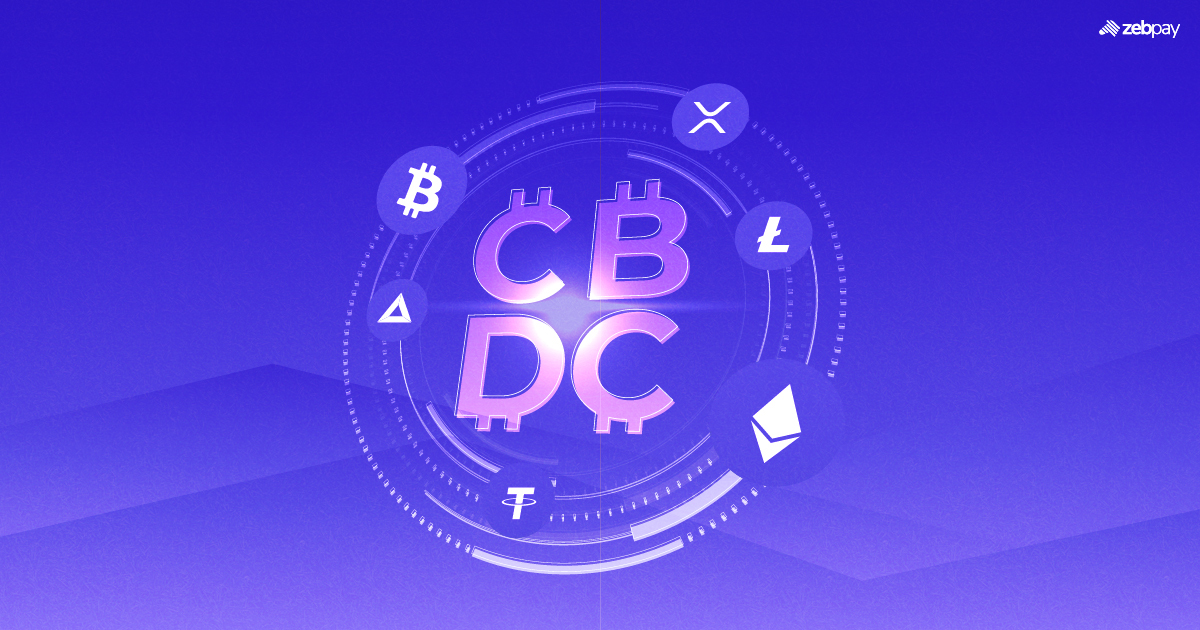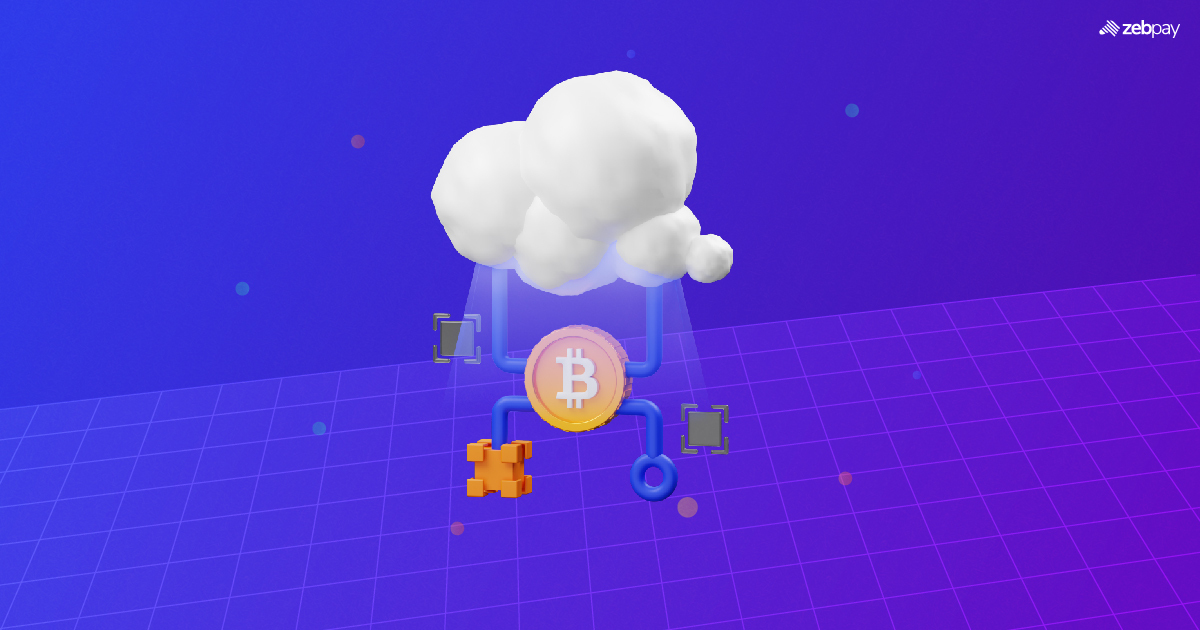Central bank digital currencies (CBDCs) are the electronic representation of a government-issued currency. Central banks, responsible for supporting a nation’s government and commercial banking system, shaping monetary policy, and issuing currency, issue CBDCs.
Digital money, or digital currency, denotes a form of payment existing solely in electronic format, lacking physical tangibility like a traditional dollar bill or coin. It is managed and transacted through online systems. Crypto like Bitcoin is a well-known type of digital asset.
Digital money can also denote fiat currencies like dollars, rupees or euros and can be transferred using technologies such as UPI, and other forms of bank transfers. In some instances, it can be converted into physical cash through ATMs. This blog will explore the differentiation between CBDCs and digital money.
Read more: What is CBDC
Central Bank Digital Currency Demystified
Central banks execute monetary policy by managing the money supply, typically through securities transactions in the open market. These operations impact short-term interest rates, influencing long-term rates and overall economic activity.
CBDCs are defined by their digital nature, centralization, and programmability. In contrast to decentralized crypto assets, central banks issue and regulate CBDCs, ensuring a stability level not guaranteed by crypto. Leveraging technologies like digital ledgers and blockchain, CBDCs enable secure, transparent, and efficient transactions. They can operate on a digital ledger, which may or may not be a blockchain, facilitating rapid and secure payments across banks, institutions, and individuals.
A significant aspect of CBDCs is their programmability, which allows customization for specific purposes or conditions. For example, they can be programmed for essential needs, specific regions, or defined periods, serving as tools for monetary and social policy.
CBDCs can assume diverse forms, each affecting payment systems, monetary policy transmission, and financial system stability differently. They can be designed as general-purpose tokens for everyday public transactions or as wholesale-only tokens accessible to banks for payment and settlement activities. The choice of form depends on the central bank’s specific goals and the broader financial system’s requirements.
Digital Money: The Broader Landscape
Digital money represents a payment system that diverges from fiat currency, constituting an alternative intangible currency. In practical terms, digital money functions similarly to traditional currencies, serving as a means of payment in transactions. Its distinct feature lies in its lack of physical form, enabling instantaneous transactions and facilitating international exchanges.
The prevalent manifestation of digital money is found in bank holdings and central government deposits. Rather than being physically stored, these funds exist electronically, allowing institutions to manage transactions involving significant amounts of currency without the use of physical cash.
A popularly known variant of digital money is crypto, which operates through a blockchain network. In contemporary finance, numerous banks and financial service providers facilitate digital money transfers and online transactions, streamlining the process of wiring or transferring funds over long distances. Digital money has played a pivotal role in globalising economies by simplifying international trade through the swift exchange of digital assets.
The advent of digital money has eliminated the necessity for physical money transfers, making banking considerably more convenient. People can now conduct personal banking activities without visiting a physical branch or carrying cash.
Read more: CBDC vs Crypto
Underlying Technology
Blockchain, or Distributed Ledger Technology (DLT), is facilitating Central Bank Digital Currencies (CBDCs), sharing a fundamental aspect with other cryptos like Bitcoin. However, in contrast to decentralized crypto operating on a permissionless or public blockchain, where no single entity holds sway over the network, central banks will deploy their CBDCs on a permissioned or private blockchain network. This implies that access to and governance of the blockchain is confined to a specific group of approved participants, enabling the central bank to maintain control over the overall money supply.
CBDCs are also characterized as ‘programmable money,’ allowing specific design features and attributes to be embedded directly into the digital fiat or payment tokens. In broad terms, prevailing policy discussions revolve around two categories of CBDCs: ‘wholesale central bank digital currencies,’ streamlining central bank clearing operations between the central bank and member banks, and retail central bank digital currencies,’ accessible to the general public and essentially serving as the digital equivalent of a banknote.
Read more: Pros and Cons of CBDCs
Legal Tender and Acceptance
In the global context, challenges and substantial expenses often accompany cross-border payments. Many policymakers have explored the potential role of Central Bank Digital Currencies (CBDCs) in simplifying cross-border payments through the introduction of new technologies, streamlined distribution channels, and increased opportunities for collaboration and interoperability across jurisdictions.
However, the realization of these opportunities may face limitations due to the existing regulatory and legal frameworks governing payments between countries with distinct legal structures. These frameworks encompass aspects such as customer identification, customer due diligence, and sanctions screening to ensure compliance with the Anti-Money Laundering (AML) regulations and policies. Balancing these competing priorities presents a significant challenge, as cross-border payments, while being among the slowest and least efficient, also pose considerable legal and regulatory compliance concerns that would be equally applicable to CBDCs.
Privacy and Anonymity

Some argue that ensuring privacy with Central Bank Digital Currencies (CBDCs) is unrealistic, as governments won’t benefit from CBDCs if transactions remain anonymous. This perspective disregards the likelihood of CBDC success if people have alternative payment options, like cash, undermining the ability to oversee citizens’ spending through CBDCs.
It’s doubtful that governments would impose fewer requirements on CBDCs than on private firms for safety and security. CBDCs offering a privacy advantage over traditional mediums would necessitate a reevaluation of the existing anti-money laundering (AML) framework.
While some digital assets, like Bitcoin (BTC), allow traceable transactions, others, like Zcash (ZEC), Monero (XMR), and Beam (BEAM), prioritize anonymity and privacy. Although this privacy could make it difficult to trace the origin of transactions, it’s also considered a fundamental human right, supporting citizens’ freedom.
In the crypto community, pseudonyms are often used to protect identities, either to assert individual control or due to personal privacy and security concerns. Bitcoin’s appeal lies partly in its inherent pseudonymity within the protocol.
Read more: CBDCs and Cybersecurity
Government-backed digital currencies would likely run on a private blockchain, which reduces transparency due to centralized governance, creating a single point of failure. Centralized storage poses risks, historically leading to data breaches and leaks, with easier access for hackers compromising a smaller number of nodes compared to decentralized networks.
Financial Inclusion and Accessibility
CBDCs empower the unbanked by granting them access to the formal financial system. In addition to facilitating micro-transactions, they foster financial independence, promote saving, and integrate users into the broader banking framework. This microcurrency has the potential to be transformative, positively impacting lives. CBDCs play a role in reducing the digital and economic disparities within a country.
In a world where access to traditional banking services remains an elusive prospect for many, CBDCs emerge with a robust commitment to bridging this substantial gap. Barriers impeding digital money accessibility, such as limited financial education and technological resources, need to be addressed by developers and leaders in this groundbreaking industry.
Traditional financial institutions pose additional hurdles that digital money projects are circumventing, including documentation requirements, high fees, and a scarcity of local financial institutions in emerging markets. However, even DeFi necessitates a certain level of knowledge and understanding of financial concepts for comfortable entry. Providing comprehensive education on finance fundamentals, covering everything from savings tips to understanding market fluctuations, is essential to encouraging those who have felt excluded by traditional finance to venture into the DeFi world.
Potential Risks and Concerns
CBDCs could be susceptible to hacking, necessitating substantial cybersecurity investments by central banks. Hackers and malicious entities find increased opportunities to pilfer funds or personal data in the digital realm, where all transactions occur. Cybersecurity breaches pose the risk of significant financial losses and personal harm, potentially resulting in severe financial instability or even system collapse.
As a centralized currency, CBDC would involve the central bank recording every transaction, granting access to everyone’s financial data. This access to personal financial information raises concerns about potential surveillance, where the government may influence spending behaviour.
To ensure that your transactions and personal details are secure in the digital realm, create robust passwords, ensure your antivirus software is current, and refrain from clicking on dubious links or downloading unfamiliar software. Additionally, enhance your security by implementing two-factor authentication when accessing data-sensitive websites. Given that CBDC is a digital currency, it’s crucial to safeguard your accounts.
Conclusion
The fate of digital assets overall is intricately tied to the future of digital money, given that payments serve as the driving force behind the financial system. However, the evolution of money could take diverse paths; for instance, various forms of digital money, including CBDCs, tokenized deposits, and various types of stablecoins, could lay the groundwork for new approaches. Instead of depending on a single prediction, executives and policymakers need to consider multiple scenarios. These approaches have the potential to revolutionize business models, favouring different issuers, and their adoption is poised to reshape liquidity, market-making, and risk management, thereby exerting a significant impact on the broader financial system.
Cryptos like Bitcoin have surged in value, but its predominant use is based on scarcity, decentralisation and finiteness.
Central bank digital currencies (CBDCs) are legal tender issued by a country’s bank or monetary authority. Like crypto, these would be used and stored in online wallets, enabling the central bank to issue and freeze tokens as needed. Various countries, including China and India, have proposed digital versions of their currencies. The future of the financial system is likely to be a hybrid one, incorporating different types of digital money tailored for diverse applications.
If you found this blog to be useful, do share it with other like-minded crypto enthusiasts. Click on the button below to begin your crypto trading journey using ZebPay.






